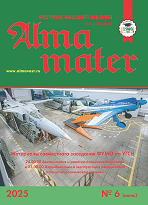UDC 316.4-055.2
https://doi.org/10.20339/AM.01-21.107
F.Yu. Kushnarev is Cand.Sci. (Political Studies), Ass. Prof. at Department of Social Policy at Yaroslavl State University e-mail: kushnarevcustoms@mail.ru; D.T. Berezin is Cand.Sci. (Engineering Science), Ass. Prof. at Department of Economic Theory and Management at Yaroslavl State Pedagogical University n.a. K.D. Ushinsky e-mail: dimitry_rus_rub@rambler.ru; E.S. Rumyantseva is Cand.Sci. (Political Studies), Ass. Prof. at Yaroslavl State Pedagogical University n.a. K.D. Ushinsky e-mail: elenaudit@gmail.com; and E.M. Shishalov is 1st year Master’s student at Faculty of Social and Political Sciences at Yaroslavl State University e-mail: eshishalov@bk.ru
Analyzed is the protest activity of women. The authors conducted a study among girls at leading universities of Yaroslavl. It was found that the growth of protest mood among the female part of student youth is associated not with an increase in feminist sentiments in society, but with a drop in the level and quality of life over the past 5-6 years. Protest activity among girls (women) is less intense, than among boys. In addition, girls are more likely, than boys to show sympathy for the protesters. It was also revealed, that girls more regularly take part in permitted meetings, demonstrations, pickets than boys. Girls tend to mobilize political participation to a greater extent than young men. It has been established that those who are not satisfied with the government's policies are usually from families with low or unstable incomes. The part of female students, who are from wealthy families and are unsatisfied with the policy of the state noted, that the main motive for participating in unauthorized actions is the desire to obtain more political rights. In addition, it was found, that the higher the level of education of the parents, the higher the political activity of students. The study allows to conclude that the growth of political activity among girls will increase every year and this must be taken into account, when implementing youth policy.
Key words: protest activity, protest, mobilization, demobilization, students, universities.
References
1. Artemiev, A. Higher grade of Russian winter: World media about “snow winter” in Russia. Gazeta.ru. 12 december 2011; Bidder, B., Offenberg, A. Protest gegen Putin: Russlands Schneerevolution schmilzt. InoPressa. 2012. 12 march.
2. Berezin, D.T., Klimova, L.V., Kiselev, S.A., Zavernyagin, S.A. Influence of gender features of future bachelors in the sphere of management of organization on choice of their personal values. In: Science, education and innovations in modern world. Materials of national scientific practical conference. 2018. P. 67–73.
3. Women in Russia stand up for more frequent participation in actions of protest. Why? URL: https://www.dw.com/ru/женщины-в-россии-стали-чаще-выходить-на-акции-протеста-почему/a-51267964 (accessed on 20.05.2020).
4. Koryakovtseva, O.A. Political socialization of the youth in educational system of Russia. Middle Russia vestnik of social sciences. 2008. No. 4 (9). P. 64–67.
5. Sokolov, A.V., Belyakov, A.A. Potential of development of civil activityin social networks (example of Yaroslavl region). PolitBook. 2019. No. 4. P. 37–51.
6. Talanov, S.L. Influence of referent personality (group) on protest mood of student youth. Social political researches. 2020. No. 2 (7). P. 32–47. DOI: 10.30323/26-58—428X-2020-2-7-32-47
7. Frolov, A.A., Mironova, S.V. Protest champagne in modern Russia: regional aspect on example of Yaroslavl region. PolitBook. 2019. No. 1. P. 6–21.
8. Bourdieu, P. Espace social et genese des “classes”. Actes de larecherche en science sociales. 1984. No. 52–53. P. 3–14.
9. Goldstone, J.A. The Comparative and Historical Study of Revolutions. Annual Review of Sociology. 1982. Vol. 8. P. 187–207.











.png)






